
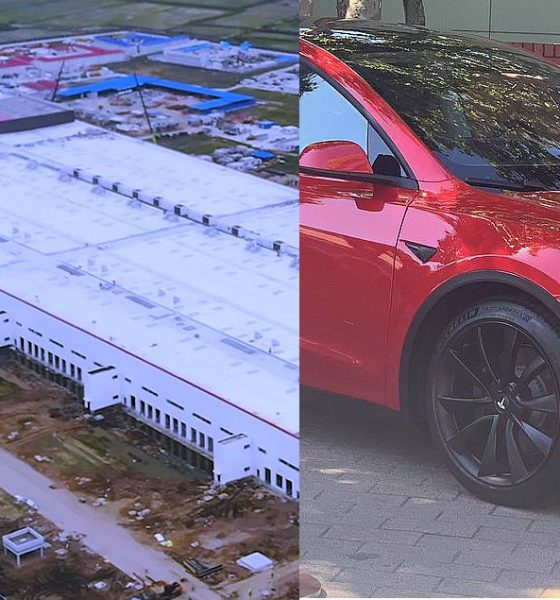
News
The Model Y and Gigafactory 3 heralds a faster, more profitable Tesla
Tesla’s second-quarter report and its succeeding earnings call provided updates on what could very well be two of the electric car maker’s most pertinent projects to date: the Model Y ramp and Gigafactory 3 in Shanghai, China. Based on Tesla’s recent reports, it appears that both initiatives are moving along at an impressive pace, perhaps even faster than initially expected.
Model Y
When Elon Musk unveiled the Model Y last March, he provided a rough timeline for the upcoming vehicle. During his presentation, Musk mentioned that the all-electric midsize SUV would start deliveries starting Fall 2020 for the Long Range, Dual Motor AWD, and Performance versions, and Spring 2021 for the Standard variant. This was quite conservative, considering that Musk has a reputation for setting extremely aggressive targets for the production of the company’s vehicles.
Since then, several reports have emerged which hinted at Model Y production being far less volatile and challenging than the Model 3’s manufacturing ramp, a task so difficult that Elon Musk candidly called the period as “production hell.” In the Q2 Update Letter, Tesla confirmed that preparations for Model Y production have begun in the Fremont factory. The company also mentioned that due to the overlap in the components of the Model Y and the Model 3, the company was able to “leverage existing manufacturing designs in the development of the Model Y production facilities.” This bodes well for the midsize SUV, considering that Tesla had rolled out several improvements to Model 3 production process over the years.
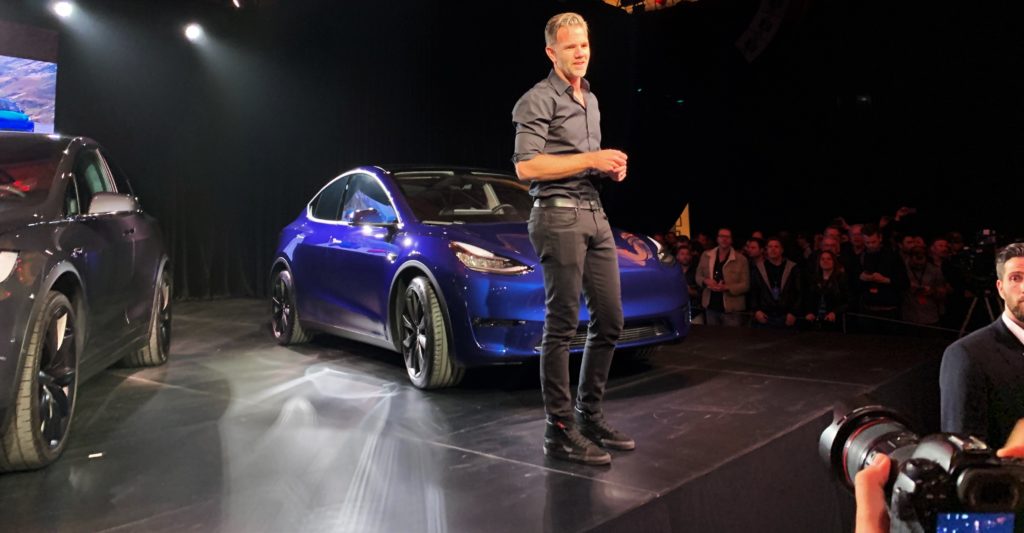
Several other hints have also emerged suggesting that Tesla will be ramping the Model Y with its best technologies available. Recent patent applications, for example, have revealed that Tesla is working on a new wiring architecture that will reduce the wires used in the Model Y to just 100 m per vehicle, a significant reduction from the 1.5 km currently being used for the Model 3. Another patent has also emerged showing the design for a mammoth casting machine, which was hinted at by Elon Musk during an appearance at the Ride the Lightning podcast last month. “When we get the big casting machine, it’ll go from 70 parts to 1 with a significant reduction in capital expenditure on all the robots to put those parts together,” Musk said.
Considering all the innovation that is being implemented for the Model Y, it appears that Tesla is doing all it can to ensure that the vehicle does not encounter delays with its rollout. In fact, with Fremont already being prepared for the Model Y, and with giant casting machines being designed specifically for the vehicle, it almost seems like Tesla is trying to start the manufacturing of the SUV earlier than expected. There’s a long time between today and Fall 2020, and that seems to be more than enough to work out the manufacturing of a vehicle that is, in essence, a taller, more spacious Model 3.
Gigafactory 3
Over in China, another understated Tesla project is taking shape. When Elon Musk attended Gigafactory 3’s groundbreaking ceremony back in January, he stated that initial production of the Model 3 in the facility would begin by the end of the year. This target timeframe was met with disdain and skepticism from critics, many of whom have noted that no car factory has ever been built in the speed that Musk wanted. Six months later, Gigafactory 3’s general assembly building is practically complete, and its interior is already being tooled. Footage from drone flyovers showed the rise of the factory, and images from Tesla’s Q2 Update Letter showed that some sections of the facility already have robots installed in them.
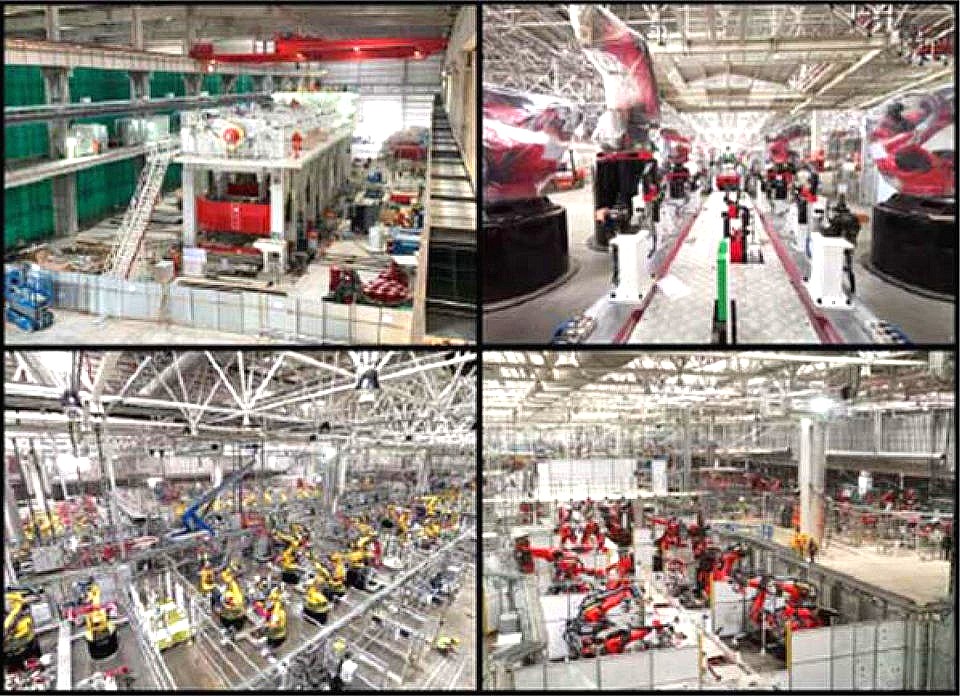
Quite interestingly, it is not Elon Musk that is providing ambitious timeframes for Gigafactory 3 anymore. Instead, it is Chinese government officials. Local reports, for example, have suggested that China is looking to start initial Model 3 production as early as September, with the facility ramping to an output of 150,000 vehicles per year early next year. Compared to Wall Street’s estimates, which currently suggest that Gigafactory 3 will produce around 35,000 to 40,000 vehicles in 2020, China’s goals for the facility are far more optimistic.
Gigafactory 3 has pretty much exceeded expectations since work in the facility entered overdrive. Just like the Model Y ramp, the key to Gigafactory 3 lies in the company’s innovations with Model 3 production. Tesla mentioned this in its Q2 Update Letter. “Gigafactory Shanghai continues to take shape, and in Q2 we started to move machinery into the facility for the first phase of production there. This will be a simplified, more cost-effective version of our Model 3 line with capacity of 150,000 units per year – the second generation of the Model 3 production process,” Tesla wrote.
There is no doubt that 2019 is turning out to be an incredibly challenging year for Tesla. Following the first quarter, which saw lower-than-expected vehicle deliveries, Tesla set new delivery records in the second quarter, only to end once more at a loss. Yet, together with this, the company also ended the quarter in more stable footing, as shown by its $5 billion in cash, the largest in its history. This was recently addressed by Baird analyst Ben Kallo, who noted that “back to the cash flow they generated during the quarter, there’s a couple of hundred million dollars, so this idea that they don’t make money is completely wrong, and the headline needs to change. There’s $5 billion in the balance sheet. They’re not going out of business.” Ultimately, the Model Y and Gigafactory 3 seem to be two projects that are heralding a new era for Tesla: one that is more mature, precise, and poised to disrupt at a scale that’s never seen before.

News
Tesla hints toward Premium Robotaxi offering with Model S testing
Why Tesla has chosen to use a couple of Model S units must have a reason; the company is calculated in its engineering and data collection efforts, so this is definitely more than “we just felt like giving our drivers a change of scenery.”

Tesla Model S vehicles were spotted performing validation testing with LiDAR rigs in California today, a pretty big switch-up compared to what we are used to seeing on the roads.
Tesla utilizes the Model Y crossover for its Robotaxi fleet. It is adequately sized, the most popular vehicle in its lineup, and is suitable for a wide variety of applications. It provides enough luxury for a single rider, but enough room for several passengers, if needed.
However, the testing has seemingly expanded to one of Tesla’s premium flagship offerings, as the Model S was spotted with the validation equipment that is seen entirely with Model Y vehicles. We have written several articles on Robotaxi testing mules being spotted across the United States, but this is a first:
🚨 Tesla is using Model S vehicles fitted with LiDAR rigs to validate FSD and Robotaxi, differing from the Model Ys that it uses typically
Those Model Y vehicles have been on the East Coast for some time. These Model S cars were spotted in California https://t.co/CN9Bw5Wma8 pic.twitter.com/UE55hx5mdd
— TESLARATI (@Teslarati) December 11, 2025
Why Tesla has chosen to use a couple of Model S units must have a reason; the company is calculated in its engineering and data collection efforts, so this is definitely more than “we just felt like giving our drivers a change of scenery.”
It seems to hint that Tesla could add a premium, more luxury offering to its Robotaxi platform eventually. Think about it: Uber has Uber Black, Lyft has Lyft Black. These vehicles and services are associated with a more premium cost as they combine luxury models with more catered transportation options.
Tesla could be testing the waters here, and it could be thinking of adding the Model S to its fleet of ride-hailing vehicles.
Reluctant to remove the Model S from its production plans completely despite its low volume contributions to the overall mission of transitioning the world to sustainable energy, the flagship sedan has always meant something. CEO Elon Musk referred to it, along with its sibling Model X, as continuing on production lines due to “sentimental reasons.”
However, its purpose might have been expanded to justify keeping it around, and why not? It is a cozy, premium offering, and it would be great for those who want a little more luxury and are willing to pay a few extra dollars.
Of course, none of this is even close to confirmed. However, it is reasonable to speculate that the Model S could be a potential addition to the Robotaxi fleet. It’s capable of all the same things the Model Y is, but with more luxuriousness, and it could be the perfect addition to the futuristic fleet.
News
Rivian unveils self-driving chip and autonomy plans to compete with Tesla
Rivian, a mainstay in the world of electric vehicle startups, said it plans to roll out an Autonomy+ subscription and one-time purchase program, priced at $49.99 per month and $2,500 up front, respectively, for access to its self-driving suite.
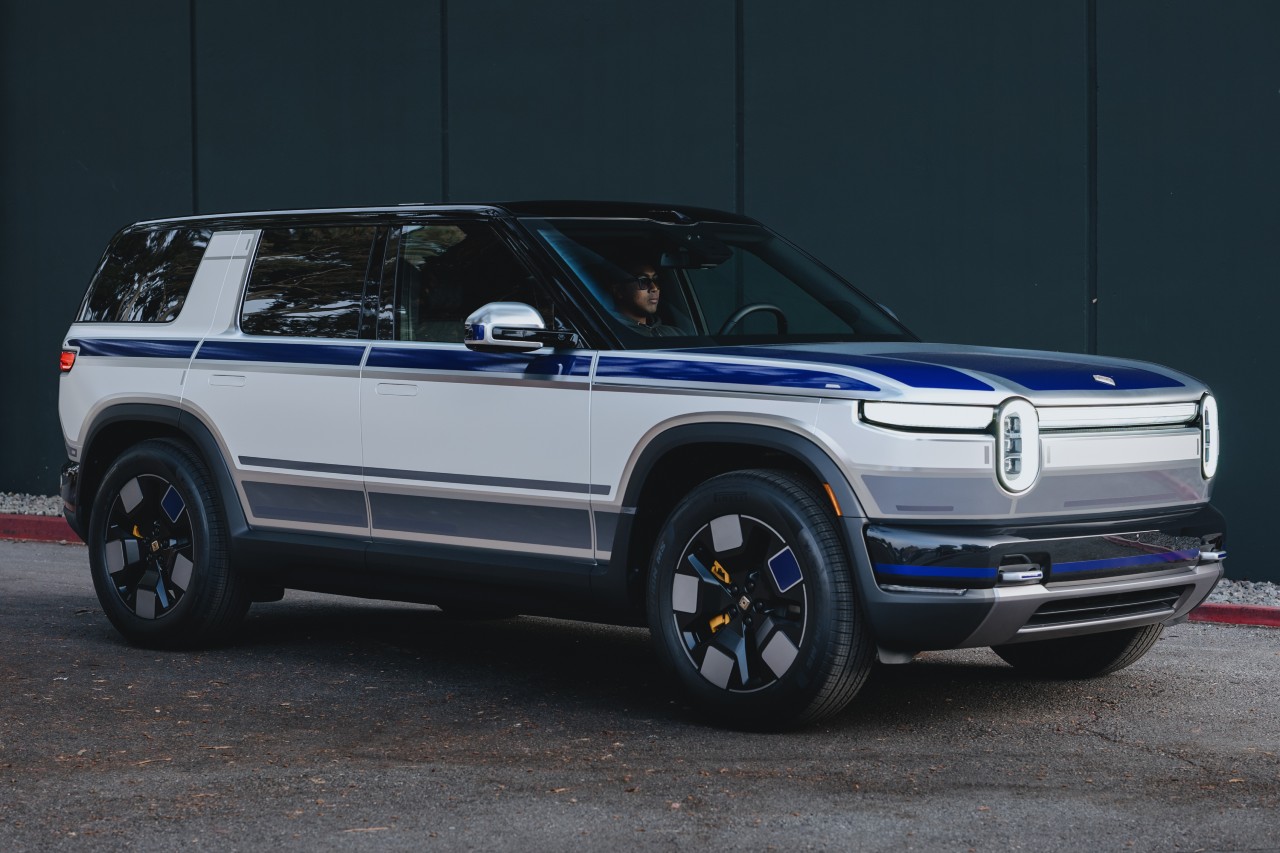
Rivian unveiled its self-driving chip and autonomy plans to compete with Tesla and others at its AI and Autonomy Day on Thursday in Palo Alto, California.
Rivian, a mainstay in the world of electric vehicle startups, said it plans to roll out an Autonomy+ subscription and one-time purchase program, priced at $49.99 per month and $2,500 up front, respectively, for access to its self-driving suite.
CEO RJ Scaringe said it will learn and become more confident and robust as more miles are driven and it gathers more data. This is what Tesla uses through a neural network, as it uses deep learning to improve with every mile traveled.
He said:
“I couldn’t be more excited for the work our teams are driving in autonomy and AI. Our updated hardware platform, which includes our in-house 1600 sparse TOPS inference chip, will enable us to achieve dramatic progress in self-driving to ultimately deliver on our goal of delivering L4. This represents an inflection point for the ownership experience – ultimately being able to give customers their time back when in the car.”
At first, Rivian plans to offer the service to personally-owned vehicles, and not operate as a ride-hailing service. However, ride-sharing is in the plans for the future, he said:
“While our initial focus will be on personally owned vehicles, which today represent a vast majority of the miles to the United States, this also enables us to pursue opportunities in the rideshare space.”
The Hardware
Rivian is not using a vision-only approach as Tesla does, and instead will rely on 11 cameras, five radar sensors, and a single LiDAR that will face forward.
It is also developing a chip in-house, which will be manufactured by TSMC, a supplier of Tesla’s as well. The chip will be known as RAP1 and will be about 50 times as powerful as the chip that is currently in Rivian vehicles. It will also do more than 800 trillion calculations every second.
Meet the Rivian Autonomy Processor.
Fast, smart, scalable and purpose-built for autonomous driving and the world of physical AI. Hitting the open road in 2026. pic.twitter.com/0wYXi5WKy7
— Rivian (@Rivian) December 11, 2025
RAP1 powers the Autonomy Compute Module 3, known as ACM3, which is Rivian’s third-generation autonomy computer.
ACM3 specs include:
- 1600 sparse INT8 TOPS (Trillion Operations Per Second).
- The processing power of 5 billion pixels per second.
- RAP1 features RivLink, a low-latency interconnect technology allowing chips to be connected to multiply processing power, making it inherently extensible.
- RAP1 is enabled by an in-house developed AI compiler and platform software
As far as LiDAR, Rivian plans to use it in forthcoming R2 cars to enable SAE Level 4 automated driving, which would allow people to sit in the back and, according to the agency’s ratings, “will not require you to take over driving.”
More Details
Rivian said it will also roll out advancements to the second-generation R1 vehicles in the near term with the addition of UHF, or Universal Hands-Free, which will be available on over 3.5 million miles of roadway in the U.S. and Canada.
More than any other feature, our owners have asked for more hands-free miles.
With Universal Hands-Free, you can now enjoy hands-free assisted driving on any road with clearly defined lanes. That’s roughly 3.5 million miles in the U.S. and Canada.
Look for it in our next… pic.twitter.com/ZFhwVzvt6b
— Rivian (@Rivian) December 11, 2025
Rivian will now join the competitive ranks with Tesla, Waymo, Zoox, and others, who are all in the race for autonomy.
News
Tesla partners with Lemonade for new insurance program
Tesla recently was offered “almost free” coverage for Full Self-Driving by Lemonade’s Shai Wininger, President and Co-founder, who said it would be “happy to explore insuring Tesla FSD miles for (almost) free.”
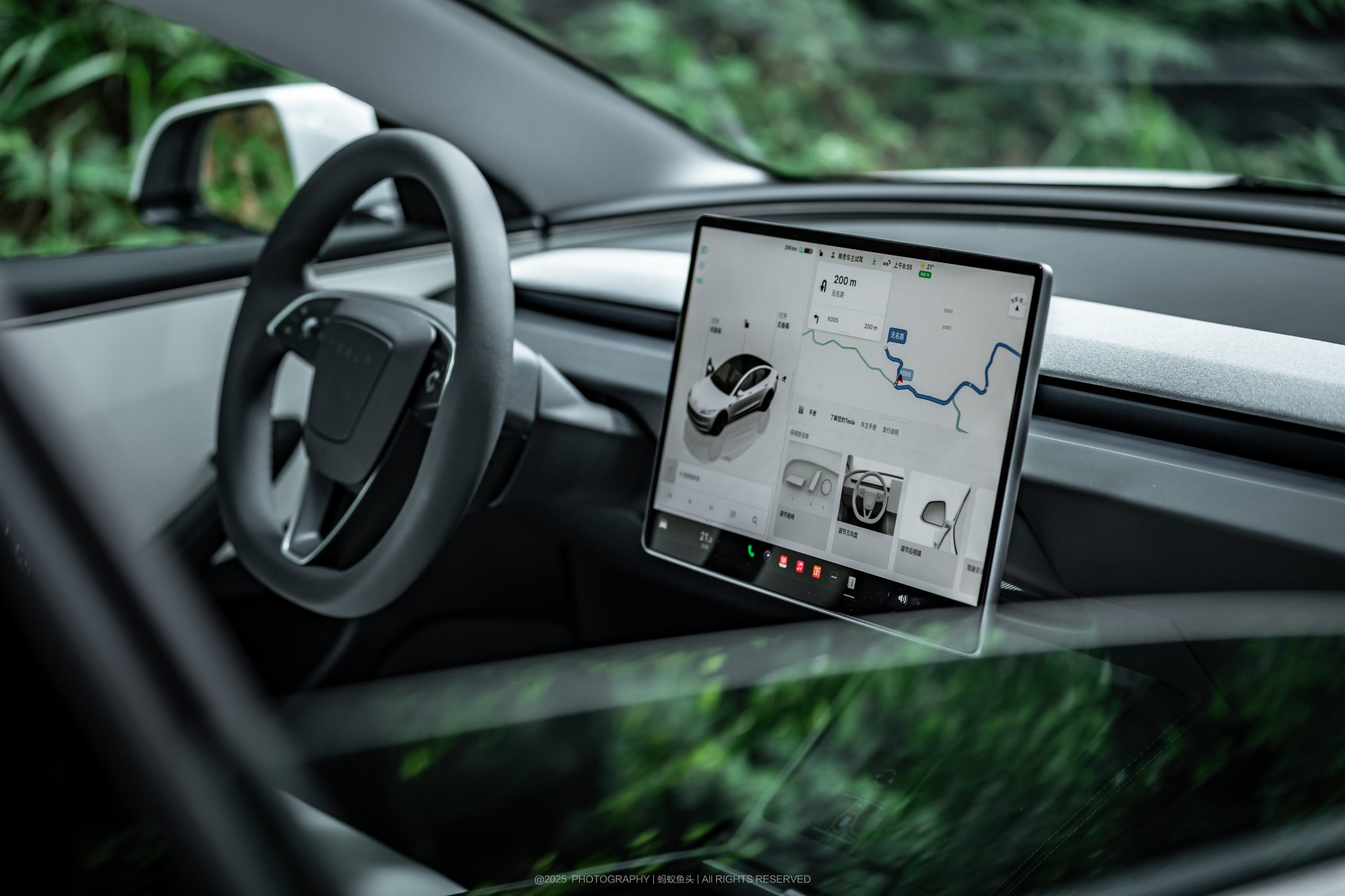
Tesla owners in California, Oregon, and Arizona can now use Lemonade Insurance, the firm that recently said it could cover Full Self-Driving miles for “almost free.”
Lemonade, which offered the new service through its app, has three distinct advantages, it says:
- Direct Connection for no telematics device needed
- Better customer service
- Smarter pricing
The company is known for offering unique, fee-based insurance rates through AI, and instead of keeping unclaimed premiums, it offers coverage through a flat free upfront. The leftover funds are donated to charities by its policyholders.
On Thursday, it announced that cars in three states would be able to be connected directly to the car through its smartphone app, enabling easier access to insurance factors through telematics:
Lemonade customers who own @Tesla vehicles in California, Oregon, and Arizona can now connect their cars directly to the Lemonade app! ⚡🚘
Direct connection = no telematics device needed 📵
Better customer experience 💃
Smarter pricing with Lemonade 🧠This is a game-changer… pic.twitter.com/jbabxZWT4t
— Lemonade (@Lemonade_Inc) December 11, 2025
Tesla recently was offered “almost free” coverage for Full Self-Driving by Lemonade’s Shai Wininger, President and Co-founder, who said it would be “happy to explore insuring Tesla FSD miles for (almost) free.”
The strategy would be one of the most unique, as it would provide Tesla drivers with stable, accurate, and consistent insurance rates, while also incentivizing owners to utilize Full Self-Driving for their travel miles.
Tesla Full Self-Driving gets an offer to be insured for ‘almost free’
This would make FSD more cost-effective for owners and contribute to the company’s data collection efforts.
Data also backs Tesla Full Self-Driving’s advantages as a safety net for drivers. Recent figures indicate it was nine times less likely to be in an accident compared to the national average, registering an accident every 6.36 million miles. The NHTSA says a crash occurs approximately every 702,000 miles.
Tesla also offers its own in-house insurance program, which is currently offered in twelve states so far. The company is attempting to enter more areas of the U.S., with recent filings indicating the company wants to enter Florida and offer insurance to drivers in that state.








